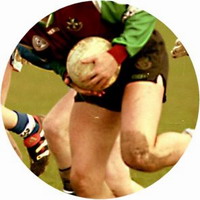Stars of Ireland's two homegrown sports for men reach deal on payment
Stars of Ireland's Gaelic football and hurling called off strike plans after reaching a deal to receive payment for the first time in the 123-year history of their amateur leagues.

Sports Minister Seamus Brennan said that, starting in January, the government would begin paying out a total of 3.5 million EUR(US$5.2 million) annually to the top 1,900 players in the Gaelic Athletic Association.
Their level of pay will depend on how far their county-based teams advance toward the all-Ireland championships staged each September, when crowds exceeding 80,000 pack Croke Park stadium in Dublin.
The Gaelic Players Association, which had threatened to refuse to play starting in January, welcomed the agreement with the government and the Gaelic Athletic Association. The breakthrough followed five years of on-again, off-again negotiations.
"It's an important day. At long last the status of inter-county players has been elevated to its rightful place," said Dessie Farrell, chief executive of the players association, which was founded in 2000 to demand a share of the GAA's wealth. Previously the union has won the right for players to earn money from product endorsements.
All sides stressed that the money should not be considered a salary, only as "compensation" for players' sacrifices in money and time when taking time off from their employment to train and compete.
The deal requires recipients of money to shun all performance-enhancing drugs. Anyone who fails an Irish Sports Council-administered doping test would be denied money.
At stake is the survival of Gaelic sports as an amateur-status sport. The popularity of Gaelic sports depends, in part, on the fiercely held loyalties of people toward their county teams.
Unlike in professional sports, top Gaelic athletes cannot be traded to other counties' teams in pursuit of riches and fame, but must play for the county of their family roots.
The Gaelic Athletic Association - a pillar of Irish nationalism that began organizing native sports in 1884 as a way to rebel against British rule - previously opposed government plans to begin paying players. The GAA expressed fears that it could encourage demands for full-blown salaries, or that the government might try to take away money from its existing support for GAA activities.
The agreement published Thursday specifies that the new money for players "will be additional to, and will not negatively impact on, existing funding or any future funding."
GAA president Nickey Brennan said he was pleased that county-level players were receiving financial recognition without undermining their amateur status.
The deal does not include top female athletes who play camogie, the women's equivalent to hurling. Both of those sports appear similar to field hockey but are much faster-paced, because players can use their clubs to pick up the small round ball and bat it like a baseball.
Gaelic football is a hybrid sport in which a soccer-sized ball can be bounced on the foot or on the ground, passed with rugby-style laterals or volleyball-style strikes, and drop-kicked to pass or score. Both Gaelic football and hurling feature rough collisions, frequent fouls and occasional brawls.
Subscribe to Pravda.Ru Telegram channel, Facebook, RSS!


